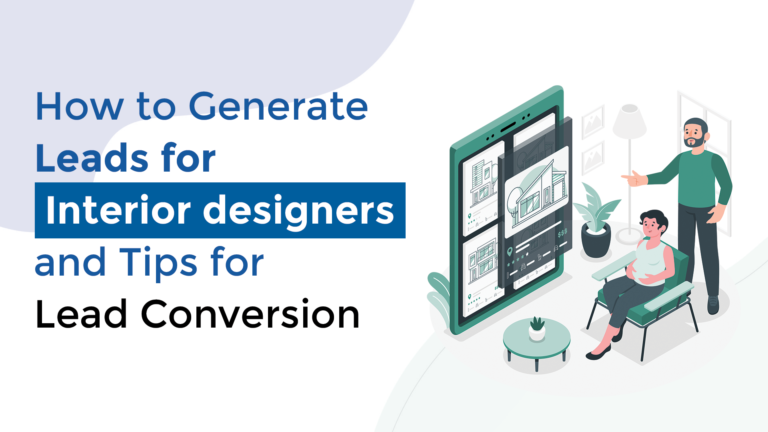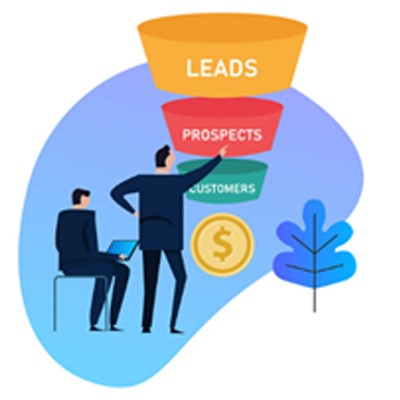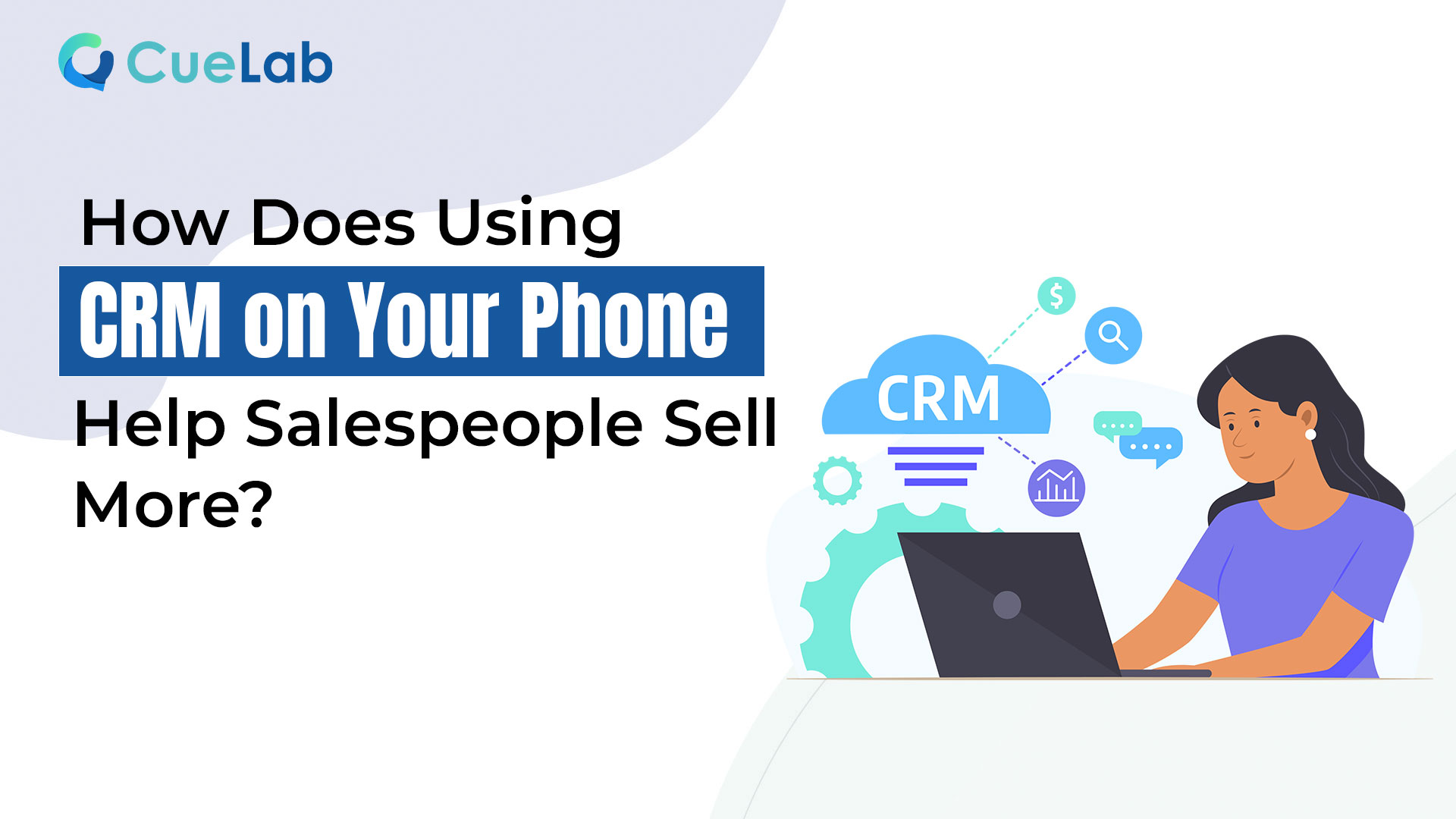How to generate leads for interior designers and tips for lead conversion


In the realm where aesthetics seamlessly merge with functionality, interior designers wield transformative abilities, turning spaces into personalized sanctuaries. Whether crafting residential retreats, bustling commercial hubs, or tranquil healthcare environments, these designers possess the prowess to infuse life into every nook and cranny. For those in the profession eager to broaden their horizons and unveil their distinctive visions, the art of lead generation stands as the gateway to new opportunities.
To master the craft of lead generation in interior design, a holistic strategy is imperative. Commence by constructing a robust online presence, anchored by an enticing website and dynamic social media profiles. The website should serve as a visual portfolio, featuring client testimonials and providing glimpses into the creative process. Platforms such as Instagram and Pinterest become playgrounds for crafting mood boards and curating trend-inspired content, luring potential clients into the captivating realm of design innovation.
Networking emerges as another invaluable tool in the lead generation arsenal. Attend industry events, forge collaborations with local businesses, and immerse yourself in online forums to connect with prospective clients and cultivate professional relationships. In an industry where word of mouth holds immense power, each project should echo an unwavering commitment to excellence.
Elevating your status as an industry authority is achievable through disseminating valuable content via blogs or newsletters. Position yourself as the go-to expert by offering insights on design trends, space optimization, and décor tips. Hosting webinars or workshops provides a direct channel to engage with your audience, showcasing your expertise and fostering a community around your brand.
Lead generation is an ever-evolving process, demanding adaptability to market trends. By harmonizing a captivating online presence, proactive networking, and content-driven engagement, you position yourself as the premier interior designer. Let your designs eloquently communicate, magnetizing clients who resonate with your unique approach to interior aesthetics. Embrace the boundless power of creativity and watch as your designs captivate hearts and spaces alike. As you navigate this creative journey, consider integrating lead management software and a robust CRM for Facebook leads to streamline your efforts, ensuring efficient tracking and conversion of potential clients. Explore the possibilities of utilizing Facebook lead notifications and Facebook lead ads notifications to stay instantly informed about new opportunities. Additionally, consider leveraging the benefits of free lead management software to optimize your processes, providing a seamless experience for both you and your clients. The incorporation of the best lead tracking software into your strategy ensures that no opportunity slips through the cracks, enhancing your overall effectiveness in the competitive world of interior design. Remember, a well-crafted lead conversion strategy is the key to turning potential clients into loyal patrons, solidifying your position as a leader in the industry.
What is Lead Generation For Interior Design?

This simply means someone has expressed an interest in using your services, indicating a potential lead for your interior design business. This interest can be shown by completing a form with their contact information like name, phone number, email address, and so on—a crucial step in the lead generation process. In this case, if you own an interior design service, you might ask a few more questions like in the form below.
When the prospect completes the form, it gets sent to your email or a CRM software, ensuring efficient lead management. So basically, lead generation for interior design is essentially someone raising their hand saying, “Hey, I would like to work with you.” Utilizing a reliable lead notification system, such as Facebook lead notifications or Facebook lead ads notifications, can further enhance your responsiveness to these expressions of interest. Integrating a robust lead conversion strategy ensures that these potential leads are effectively nurtured and transformed into satisfied clients. Consider exploring the benefits of free lead management software to streamline this process, providing a seamless experience for both you and your potential clients. A well-implemented CRM for Facebook leads and the best lead tracking software contribute to the overall success of your interior design business, creating a path for growth and establishing your brand as a leader in the industry. Explore comprehensive lead management solutions to maximize the potential of every expressed interest, turning them into valuable opportunities for your business.
Steps to Follow for Lead Generations:
Lead generation is a crucial aspect of business growth, helping you identify and cultivate potential customers. Here are steps you can follow for effective lead generation:

1. Identify Your Ideal Customers:
Identify your ideal customers by considering demographics, interests, and needs.
Create buyer personas to understand your target audience better.
2. Develop a Strong Value Proposition:
Clearly articulate the value your product or service provides to potential customers.
Highlight what sets you apart from competitors.
3. Make Your Website Easy to Use:
Ensure your website is user-friendly and has clear calls-to-action.
Use landing pages to capture leads through forms or sign-ups.
4. Create Compelling Content:
Develop high-quality content that addresses your audience’s pain points.
Use a variety of content types, such as blog posts, ebooks, videos, and infographics.
5. Leverage Social Media:
Identify the social media platforms where your audience is active.
Share valuable content, engage with your audience, and use social media advertising if feasible.
6. Implement SEO Strategies:
Optimize your website for search engines to improve visibility.
Use relevant keywords, meta tags, and high-quality content to attract organic traffic.
7. Email Marketing:
Build an email list by offering incentives or exclusive content.
Use targeted and personalized email campaigns to nurture leads.
8. Utilize Lead Magnets:
Offer valuable resources (e.g., eBooks, whitepapers, webinars) in exchange for contact information.
Ensure that your lead magnets are relevant to your target audience.
9. Networking and Partnerships:
Attend industry events, conferences, or webinars to connect with potential leads.
Form partnerships with other businesses to expand your reach.
10. Implement Chatbots and Live Chat:
Use chatbots on your website to engage visitors and collect basic information.
Provide live chat support for real-time interaction with potential leads.
11. Run Paid Advertising Campaigns:
Use paid advertising on platforms like Google Ads or social media to target specific audiences.
Monitor and optimize ad performance regularly.
12. Customer Referral Program:
Encourage satisfied customers to refer others through a referral program.
Offer incentives for successful referrals.
13. Measure and Analyse:
Track key performance indicators (KPIs) to measure the success of your lead generation efforts.
Use analytics tools to understand visitor behaviour and make data-driven decisions.
14. Continuous Optimization:
Regularly review and optimize your lead generation strategies based on performance data.
Stay updated on industry trends and adjust your approach accordingly.
Tips for Lead Conversion:
Lead conversion is the process of turning potential leads into actual customers. Here are some tips to improve your lead conversion rates:

1. Prompt Follow-up:
Respond to leads quickly, preferably within the first few hours of contact.
Use automated email responses or chatbots to acknowledge inquiries immediately.
2. Personalize Communication:
Tailor your communication to the specific needs and interests of the lead.
Use personalization tokens in emails to address leads by their names.
3. Build Trust:
Establish credibility by showcasing customer testimonials, case studies, and reviews.
Clearly communicate the value of your product or service and how it addresses the lead’s pain points.
4. Provide Value:
Offer additional resources or information that can help leads make informed decisions.
Educate leads on how your product or service can solve their specific problems.
5. Clear Calls-to-Action (CTAs):
Use compelling and clear CTAs in your communications.
Guide leads through the conversion process with straightforward instructions.
6. Streamlined Sales Process:
Simplify the purchase process to minimize friction.
Avoid lengthy and complicated forms or steps that could deter potential customers.
7. Responsive Design:
Ensure that your website and any online forms are mobile-friendly.
A seamless experience across devices can contribute to higher conversion rates.
8. Offer Limited-Time Promotions:
Create a sense of urgency by providing time-limited offers or promotions.
Highlight the benefits of taking action sooner rather than later.
9. Use Retargeting Ads:
Implement retargeting ads to remind leads about your product or service after they leave your website.
Show relevant ads based on their interactions with your site.
10. Segmentation and Targeting:
Segment your leads based on their behavior, interests, or demographics.
Customize your approach for different segments to increase relevance.
11. Sales and Marketing Alignment:
Ensure that your sales and marketing teams are aligned in their strategies.
Share insights and feedback between the teams to optimize the lead conversion process.
12. Address Objections:
Anticipate and address common objections that leads might have.
Provide information or resources that alleviate concerns and build confidence.
13. A/B Testing:
Test different elements of your website, emails, or ads to identify what resonates best with your audience.
Use A/B testing to optimize conversion rates over time.
14. Provide Excellent Customer Support:
Offer exceptional customer service to build trust and satisfaction.
Address any post-purchase concerns promptly to enhance the overall customer experience.
15. Monitor Analytics:
Use analytics tools to track the performance of your conversion strategies.
Identify areas for improvement and make data-driven adjustments.
Lead Generation Strategies for Interior Designers:
Online Presence:
Develop a visually appealing and user-friendly website showcasing your portfolio, design philosophy, and services.
Optimize your website for search engines (SEO) to increase visibility in online searches.
Utilize social media platforms such as Instagram, Pinterest, and Houzz to showcase your work and engage with a wider audience.
Content Marketing:
Create and share high-quality content through blog posts, articles, and newsletters to establish yourself as an authority in interior design.
Offer valuable insights, tips, and trends in the industry to attract and retain your target audience.
Partnerships and Networking:
Collaborate with real estate agents, architects, and home builders to expand your network and gain access to potential clients.
Attend industry events, trade shows, and local networking groups to establish meaningful connections within the community.
Client Testimonials and Reviews:
Encourage satisfied clients to leave positive reviews and testimonials on your website and other review platforms.
Word-of-mouth recommendations are powerful; leverage them to build trust and credibility.
Lead Magnets and Freebies:
Offer free resources such as e-books, guides, or webinars related to interior design in exchange for potential clients’ contact information.
This allows you to nurture leads and demonstrate your expertise while providing value.

Lead Conversion Tips:
Effective Communication:
Respond promptly to inquiries and maintain clear and open communication throughout the entire process.
Actively listen to clients’ needs and preferences, demonstrating your commitment to understanding their vision.
Personalized Presentations:
Tailor your presentations to showcase designs that align with the client’s style, preferences, and project requirements.
Highlight your unique selling points and explain how your approach sets you apart from competitors.
Transparency in Pricing and Process:
Clearly outline your pricing structure and the design process to set realistic expectations.
Transparency builds trust, making clients more comfortable with the financial and creative aspects of the project.
Showcase Past Successes:
Share case studies or before-and-after visuals of previous projects to demonstrate your capabilities and successful transformations.
Highlight any awards, recognitions, or industry certifications to further establish your expertise.
Flexible Payment Options:
Offer flexible payment plans to accommodate various budget constraints, making your services more accessible to a broader clientele.
The Importance of a Lead Generation Process for Interior Designers
Effective sales in the realm of interior design hinge on the acquisition and conversion of qualified leads. While you may identify as a designer rather than a marketing professional, understanding these fundamental processes is vital for successful lead management. Business owners and marketing teams must cultivate consistently successful sales and marketing strategies to thrive in the competitive landscape.
If terms like “lead generation” and “CRM lead management” seem unfamiliar, fear not. As an interior designer, you may encounter various concepts that aren’t part of your daily lexicon. In this section, we aim to demystify these terms and concepts commonly used in discussions about sales and marketing tactics.
Lead generation, a pivotal element in the sales process, involves identifying potential clients and transforming them into valuable sales opportunities. Utilizing effective lead management software and CRM lead management tools can streamline this process, ensuring a seamless journey from lead acquisition to conversion.
For instance, implementing a lead conversion strategy is crucial for maximizing the potential of every qualified lead. Whether through a lead management app or free lead management software, having a system in place ensures that no valuable lead slips through the cracks. Facebook lead notifications and Facebook lead ads notifications also play a significant role in staying informed about potential clients who engage with your brand on social media.
By gaining insights into these terms and concepts, such as lead notification and best lead tracking software, you’ll be better equipped to navigate the intricacies of sales-qualified lead generation specific to interior design. This knowledge empowers you to actively participate in and understand the comprehensive process, ensuring that your design business thrives through effective sales and marketing strategies, including CRM for Facebook leads and other lead management solutions.
4 Challenges Interior Designers Face in Lead Generation

Lead generation and interior design businesses are intertwined, and interior designers encounter unique challenges when striving to secure new projects. Here are 4 common problems you might discover when establishing or advancing your interior design business:
1. Project-based work can lead to irregular workloads, making it challenging to consistently engage in lead-generating activities. This ebb and flow of work underscores the importance of efficient lead management software to ensure no potential opportunities are missed during busy periods.
2. Generating leads initially can be challenging without a comprehensive portfolio showcasing your prior projects, references, and details. Building an impressive portfolio is time-consuming, but utilizing a lead management app can aid in organizing and presenting your work effectively.
3. In competitive segments of interior design, standing out from more established providers is crucial. Implementing proper branding and messaging strategies can assist in differentiation, supported by effective lead conversion strategies and the use of the best lead tracking software.
4. The time lapse between initial client discussions and agreement signings often spans 30-60 days. This natural lag in the sales process requires careful planning for cash flow, aligning marketing processes, and utilizing a CRM for Facebook leads, ensuring expenses are managed efficiently during this period.
How To Get Leads For Interior Design Through SEO

If you want more people to know about your interior design business, you can leverage the power of lead management software and CRM lead management. Integrating these tools enhances your ability to manage leads effectively and ensures a streamlined process for converting potential clients. Incorporating a lead management app into your strategy can further optimize your approach, providing a seamless experience for both you and your prospects.
Additionally, implementing a lead conversion strategy is crucial for maximizing the impact of your online presence. Utilize Facebook lead notifications and Facebook lead ads notifications to stay informed about potential clients who engage with your content on social media. This integrated approach, supported by effective lead notification systems, can significantly boost your visibility and engagement.
Consider using the best lead tracking software to monitor the performance of your SEO efforts. Conducting keyword research and strategically incorporating terms like “lead management solutions” into your content can enhance your website’s search engine ranking. Ensure your website remains user-friendly, especially on mobile devices, as part of your comprehensive strategy for attracting and converting leads.
Remember that SEO is an ongoing effort; it’s not a one-time job. Regularly update your website with new and interesting content related to interior design, such as blog posts or articles. This dynamic approach ensures that your online presence remains high in search results, allowing more people actively seeking an interior designer to discover your business. In essence, it’s like keeping your online shop window looking fresh and appealing for anyone passing by on the internet, establishing a strong foundation for lead management and customer acquisition.
FAQs:
1 . What are the most effective ways to get leads for interior design?
- The most effective ways to get leads for interior design involve a blend of strategies such as social media marketing, SEO, networking, and leveraging client referrals.
2. How does SEO contribute to lead generation for interior design?
- SEO enhances your website’s visibility in search engine results, making it more likely for potential clients to find you when they’re searching for interior designers online.
3. How can social media assist in generating leads for interior design?
- Social media platforms like Instagram and comparatively Pinterest are visual-centric, making them perfect for showcasing your interior design work and attracting potential clients.
4. How can I utilize client referrals to generate leads for my interior design business?
- Satisfied clients are often willing to refer altogether you to their friends and family. You can facilitate this by offering a referral program or simply requesting happy clients to share their positive experiences with others.
5. Why is networking crucial for generating leads in interior design?
- Although Networking helps you establish relationships with potential clients, fellow interior designers, and suppliers, which can lead to referrals and new business opportunities.
Conclusion:
To sum it up, effective lead management software and CRM lead management are crucial for interior designers to attract potential clients and turn them into actual projects. A lead management app can further enhance their ability to organize and respond to leads efficiently, ensuring a seamless process from initial contact to successful conversion. Utilizing Facebook lead notifications and Facebook lead ads notifications is instrumental in staying connected with potential clients who engage through social media channels, contributing to a well-rounded strategy.
A successful lead conversion strategy involves nurturing relationships and addressing clients’ specific needs. Interior designers can optimize their approach by sending personalized follow-up emails, providing valuable content, and responding promptly to inquiries. Building a recognizable brand that reflects their style and commitment to customer satisfaction is vital, supported by the best lead tracking software to monitor and refine their strategies.
Implementing CRM for Facebook leads allows designers to tailor their communication and design proposals to address clients’ pain points and aspirations, increasing the likelihood of successful conversions. Meanwhile, using the best free lead management app can offer a cost-effective solution for designers looking to streamline their processes.
Maintaining open and collaborative communication with clients throughout the design process is vital, reinforced by lead notification systems that keep designers informed. Clear pricing structures, flexible payment options, and showcasing successful project outcomes contribute to a positive perception of the designer’s services and overall lead management solutions.
In a nutshell, a successful strategy for interior designers involves being visible online through content marketing and SEO, communicating personally using lead notification systems, and delivering outstanding design solutions. By continuously adapting their approach based on client feedback and industry trends, designers can build a steady stream of leads and establish themselves as trusted professionals in the competitive design field.


